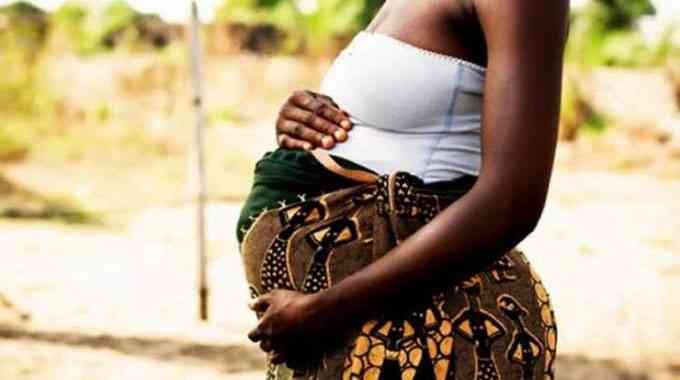
By Peter Makwanya
FOR many years and generations, Zimbabwe, just like many other developing countries, attained its food security from investing in rain-fed agriculture. As precipitation decreases in the face of impacts of climate change, in the country and elsewhere in the southern Africa region, rain-fed agriculture is no longer the success story it used to be, as it has become erratic, unreliable and volatile.
For this reason, it means that Zimbabwe and other developing countries with favourable rainfall patterns, in Africa South of the Sahara need to have plan B.
This is because the dependable rains are fast disappearing, becoming scarce, while early warning systems (EWS), have also become misleading, deceiving and overtaken by events.
A new impetus, new mindsets, and navigation need to be nurtured in the communities, nationally and regionally.
Investing in irrigation equipment, constructing diverse forms of water security and water bodies to deliver the water thirsty communities from moisture stress and depleted water reserves.
The likelihood and emergence of imminent drought, provides communities with plan B as livelihood options. With the main alternative becoming the nurturing of underground and surface water resources through exploring a variety of water security opportunities within any given country in the southern African region.
Water security measures that move countries forward in the face of climate-driven droughts can guarantee communities water resilience through sustainable human preparedness.
- Chamisa under fire over US$120K donation
- Mavhunga puts DeMbare into Chibuku quarterfinals
- Pension funds bet on Cabora Bassa oilfields
- Councils defy govt fire tender directive
Keep Reading
As climate changes people need to change so that they can adapt and get cushioned from the inherent climate variabilities and change. People need to build resilience through sustainable livelihood options aimed at changing their lives and situations.
Zimbabwe’s 2022 rain season has caught many by surprise as the rains abruptly stopped and disappeared, dashing the hopes and expectations of many.
This has demonstrated that rain-fed agriculture can no longer be relied upon and it is also too late for communities to engage in water harvesting activities since there is no water to harness anymore.
For this reason, this serves as a rude awakening for many communities who thought the rains would lift them from moisture stress and dry spells we are experiencing.
In this regard, planning is key and fundamental, for the sustainable rains people envisage just to soothe their hopes, imaginations and raise their moral.
Due to a potential drought, imminent and already sending telling signs, as climate-driven shocks impacting on communities, it is dawning on the majority of people that there must always be a soft landing point which is plan B.
While water opportunities are in abundance, communities always wait until the situation is bad in order to realise that rain-fed agriculture needs backup in terms of small-scale or household scale irrigation, harnessing water from built water reservoirs. Due to absence of adequate social safety nets, both in rural and urban areas, this year’s imminent drought is threatening to drive the whole country into hunger, poverty and despair.
This imminent drought can also lead to people being abused while others are starved for political reasons.
From individual, household, communities, nations and regional points of view, everyone has a duty to use water sparingly for sustainable future use.
From building deep wells, sustainable ponds, small-scale water reservoirs and large-scale dams, people should realise that moisture loss needs to be trapped through investing in reservoirs.
Drought always brings with it extreme heat and moisture loss and communities need to engage in sustainable preparedness in order to save lives and the environment. Water-rationing in towns and cities will drive people into water scavengers and refugees in their own countries.
In African set ups, investing in green infrastructure aimed at managing water conservation should be part of water conservation, education and awareness.
Climate change adaptation efforts in making water security a priority and situating it at the heart of community development and people’s livelihood options, is the way to go to save the moisture stressed communities from extreme moisture stress and water poverty.
Drought is a cancer that retards economic and livelihood growth and also affects other sectors like health and well-being, agricultural production, food security and environmental growth. In this regard, the country is at crossroads, risking to degenerate into wide scale hunger, extremely reduced harvests, climate security issues and threats, a case of emergency, among other things.
It is important for nations to invest in long-time water security and conservation, because storing extra surface water boosts and nurtures ground water supplies during droughts, like the imminent one staring in our faces. Citizens should also be taught a culture of not depleting the available water resources, whether ground, surface or underground water resources.
According to the IPCC Sixth Assessment Report of 2021, droughts, extreme heat and floods were projected to increase especially in southern Africa.
Therefore, as quite a number of southern African countries are flood prone, intensive education and awareness should have been amplified so that these communities know what to do in the event of flooding. With the intensity of floods which ravaged southern Africa, nobody knew that there would be an imminent drought, that is why a culture of water conservation, security and resilience is key. Many communities do not normally pay attention to ground water as long as it is still available and assumed as infinite, which is not always the case.
One other important factor that countries need to realise as they strive to use available water resources, is that they need to take note of the quality of water to be used for irrigation and human consumption.
Many water bodies have been polluted by industrial and agricultural effluence and chemicals which can also pose a danger to the crops under irrigation.
A number of water bodies have also been heavily silted through unsustainable human behaviours and activities.
These are issues of concern because during climate-induced droughts, there can be human and livestock casualties and these need to be avoided.
In this regard, water is not only a livelihood option but it is life and the future of everyone.
Everyone is guaranteed survival provided safe water is available for sustainable human livelihoods, infrastructural and moisture conservation.











